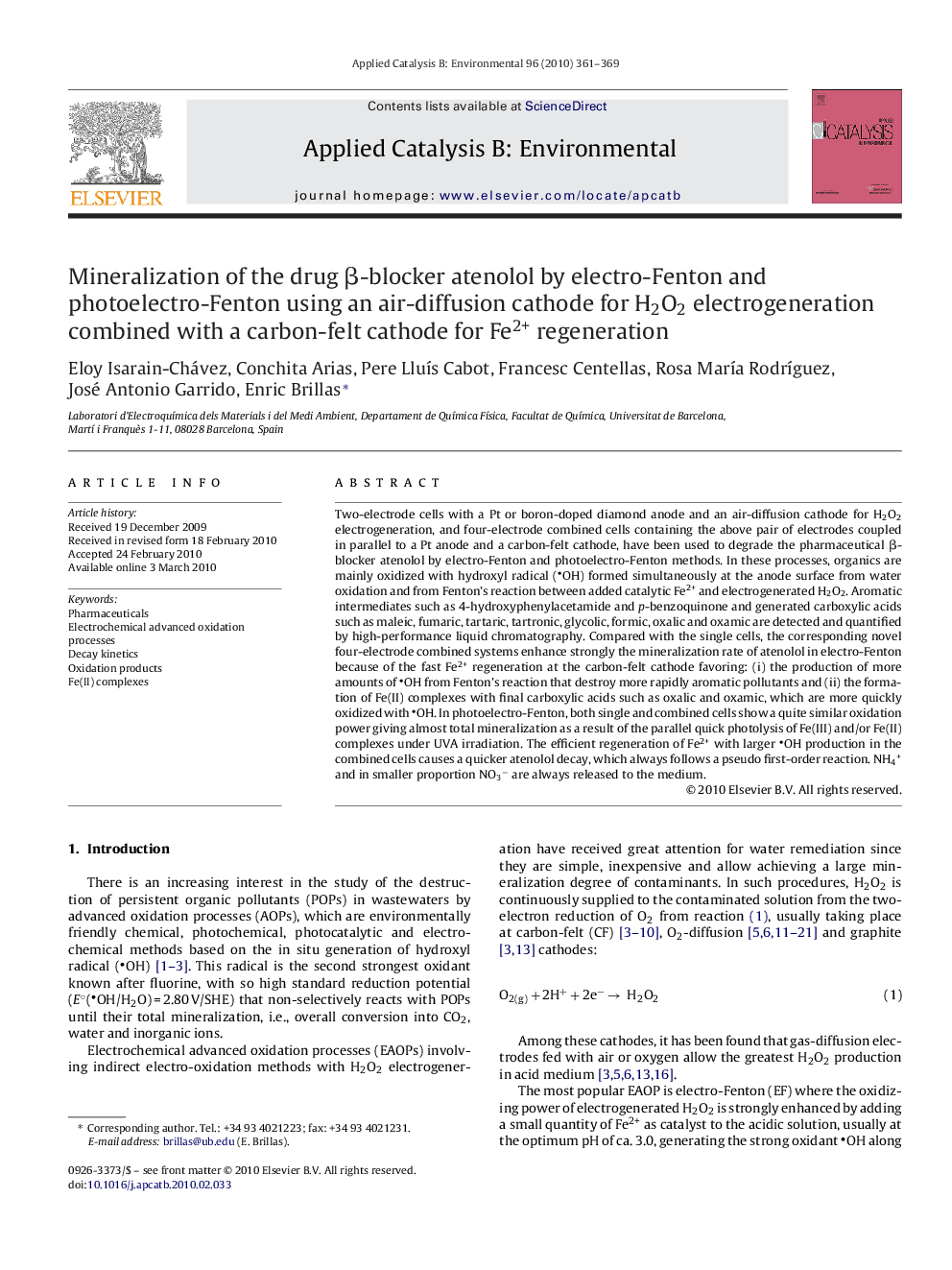| کد مقاله | کد نشریه | سال انتشار | مقاله انگلیسی | نسخه تمام متن |
|---|---|---|---|---|
| 47381 | 46470 | 2010 | 9 صفحه PDF | دانلود رایگان |

Two-electrode cells with a Pt or boron-doped diamond anode and an air-diffusion cathode for H2O2 electrogeneration, and four-electrode combined cells containing the above pair of electrodes coupled in parallel to a Pt anode and a carbon-felt cathode, have been used to degrade the pharmaceutical β-blocker atenolol by electro-Fenton and photoelectro-Fenton methods. In these processes, organics are mainly oxidized with hydroxyl radical (OH) formed simultaneously at the anode surface from water oxidation and from Fenton's reaction between added catalytic Fe2+ and electrogenerated H2O2. Aromatic intermediates such as 4-hydroxyphenylacetamide and p-benzoquinone and generated carboxylic acids such as maleic, fumaric, tartaric, tartronic, glycolic, formic, oxalic and oxamic are detected and quantified by high-performance liquid chromatography. Compared with the single cells, the corresponding novel four-electrode combined systems enhance strongly the mineralization rate of atenolol in electro-Fenton because of the fast Fe2+ regeneration at the carbon-felt cathode favoring: (i) the production of more amounts of OH from Fenton's reaction that destroy more rapidly aromatic pollutants and (ii) the formation of Fe(II) complexes with final carboxylic acids such as oxalic and oxamic, which are more quickly oxidized with OH. In photoelectro-Fenton, both single and combined cells show a quite similar oxidation power giving almost total mineralization as a result of the parallel quick photolysis of Fe(III) and/or Fe(II) complexes under UVA irradiation. The efficient regeneration of Fe2+ with larger OH production in the combined cells causes a quicker atenolol decay, which always follows a pseudo first-order reaction. NH4+ and in smaller proportion NO3− are always released to the medium.
Journal: Applied Catalysis B: Environmental - Volume 96, Issues 3–4, 7 June 2010, Pages 361–369